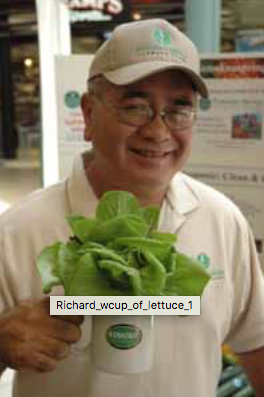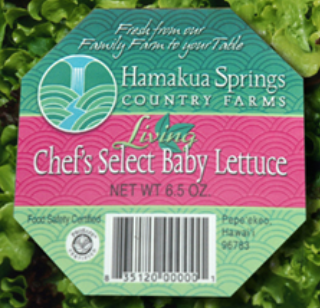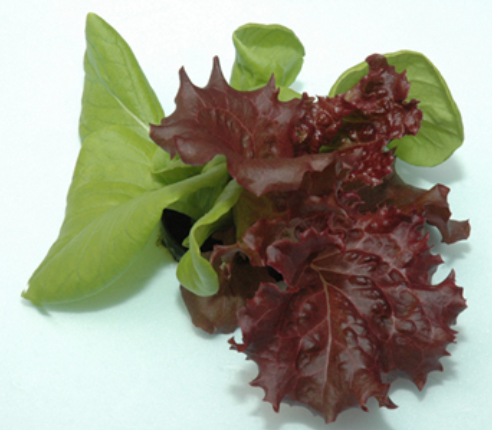At the Ag Expo this past Saturday, at Hilo’s Prince Kuhio Plaza, one of the things we demonstrated was our “living lettuce.”

Richard’s wife June and their daughter Tracy set out a head of our lettuce, which we distribute with some of the roots still attached, in a “Hawaii Seal of Quality” mug filled with water—to show how you can keep Hamakua Springs lettuce fresher, for longer.
Here’s Richard with the lettuce.

It sat there from 10 a.m. to 4 p.m., and Tracy says it looked great. “The lettuce stayed nice and perky the whole time we were there,” she says. Feel free to try this at home.
We also rolled out our new slogan: “Hydroponic: Clean and Green.” What do you think? We want to educate the public about the positives of growing food hydroponically, the way we grow everything at Hamakua Springs (except the bananas, of course).
If this is new to you, you can read more about the Clean and Green—such as why hydroponics is such a healthy choice (growing without soil means less need for chemicals and pesticides, as well as lower energy use because we don’t have to till the ground, etc.)—at our website.
We also sold our vegetables at the Ag Expo this year. While introducing people to our new products, we managed to move about 65 pounds of cucumbers, five cases of tomatoes (beefsteak, cocktail, mini Roma and heirlooms) and six cases of lettuce.
Have YOU tried Hamakua Springs? We’re at your supermarket (if you live here in the land of aloha, that is).

If you don’t live here in the land of aloha—why not? Where do you live? Tell us something about it. Or tell us what your favorite Hamakua Springs product is. We’d love to hear from you.



